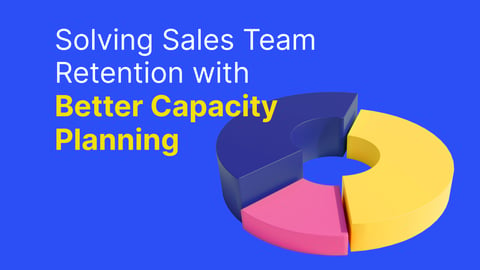Is your sales pipeline getting clogged up with harmful ‘stuff’ that’s polluting the purchase and retention stream? Find your flow and achieve a clearer finish by utilising our tips and advice.
Making new and repeat sales, accurate reporting, robust territory and quota management and compensation is reliant on reducing the noise that often stands in the way of a sales team closing the deal.
Being reminded of the ideal sales pipeline stages will help you to identify existing or potential weaknesses.
- Awareness/Opportunity
- Discovery/Communicate
- Evaluate/Qualify
- Intent/Proposition
- Purchase/Negotiation
- Loyalty/Account Maintenance
In an ideal sales environment, your team is ready and able to sail through each stage, securing the fruits of a successful deal in a timely and financially rewarding manner. Without implementing the right tools, you’re exposed to the dangers of sticking midway, or even going backwards.
A watertight SPM (sales performance management) tool can help your teams move forward without having to fight through a thicket of spreadsheets, unreliable data or lose focus and drive due to poorly directed resources and a lack of adequate compensation.
An SPM you can believe in
A sales rep needs to trust the analytics, know they are negotiating in a territory not previously visited and feel assured a good result will net a fair and just reward – which is all there for the taking with an exceptional SPM. The difference between that and an adequate data-gathering tool is like asking someone to stick their finger in the wind and guessing which way the cyclone’s coming – it removes the guesswork. It also serves as a way of moving past the first three pipeline stages into the arena of sealing the deal.
Strip out spreadsheets littered with human error and an incomplete picture of your lead’s needs and replace with easy-to-read, accurate dashboards and your team can progress much quicker to the Purchase/Negotiation stage, without the fear that they may be wasting each other’s time by peddling a past purchase or a product that doesn’t quite fit.
Right people, right place, right result
It’s not just unreliable analytics that can be a blocker for sales reps. A perfect product launch plan can live and die by how well quotas and territories are managed. Put too few people into an area that’s full-to-bursting with leads, and the result is missed opportunity due to under-resourcing.
Flipping this on its head, an overload of field reps is more damaging than a bit of toe-stepping – it can result in the team jumping on each other’s leads or approaching the same people more than once, often the killer blow for keeping a healthy Loyalty/Account Management relationship.
All of this can easily be avoided with an SPM that sets realistic territories and manageable quotas while tracking the past and present purchase history of a business that’s being approached. Throw in the ability to configure market potential for a territory and potentially what further support staff may be required along the way, and you’ve got yourself a far more reliable management system plus a much better utilised sales team.
Motivate to compensate
One thing that keeps the sales pipeline buoyant is a motivated, enthusiastic team who can happily and honestly claim the compensation they have earned.
When a compensation plan comes undone, the fallout is epic. Any sniff of unfairness, whether that’s underpayment or a slack colleague collecting more than they deserve, can at best result in demotivation or at worse, dissent and desertion to a competitor. Losing your best people at any stage of the sales pipeline is a problem, but the chances of this occurring can be greatly reduced with a finely tuned commission scheme.
Onboarding a responsive, fully robust software tool is good as employing a whole team of number experts – only better value and more reliable.
Everyone receives customised targets but with inbuilt flexibility, so there is room to respond to change. These figures, together with current and past results, can be constantly reviewed on dashboards by both the sales rep and their managers. Strong performers can be celebrated and weak links identified, while applying metrics against objectives is so much clearer.
With the right tools in place you can appreciate the fiscal constraints and bandwidth of local territories, determine team strengths and ultimately reliably know who a valuable team player is, enriching but not clogging your fast-flowing sales pipeline.




